Electrical Vehicle (EV) Charger Installation
Installing a Level 2 EV charger can reduce charge times by up to 90% versus a standard 15A plug-in mobile charger. I can work with you to get your car charged and turned around as fast as possible at home.
I am a one-man shop, and as such your quality is guaranteed personally, by the owner, with direct service from the owner and no additional employees. For every job, I hang my name and reputation on the work I do, and I always strive to leave every customer fully satisfied at the end of the day. Furthermore, I am a fully trained licensed electrician, having completed a full apprenticeship, certified, insured, and bonded.
All of my work comes with a satisfaction guarantee and one-year warranty.
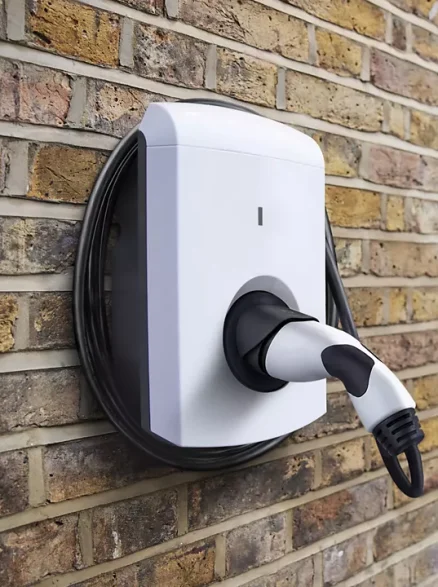
Level 2 Charging Station Installation
EV charger installations can radically improve your home charging time, whether it's a Tesla charging station or other brand. I usually install either Tesla or ChargePoint charging stations, but I can also install a simple receptacle outlet if you prefer a mobile connector, or any other brand out there.
The ChargePoint Flex is my most popular selection, which is compatible with any make of car on the market, can use either a J1772 or NACS (Tesla) plug, and can draw up to 48A to charge your electric vehicle.
A typical 15A outlet will take a full 40 hours to charge a sedan such as the Model 3, whereas a 48A Level 2 charger would only take 5 hours. It is a huge upgrade in charge times, and well worth the investment, especially after rebates.
Safety
All of my installations will meet or exceed current NEC requirements, as well as municipal code amendments.
All outlets will be provided with GFCI protection.
Efficiency
Every family has different needs. I will work with you to ensure you get as much power as you need for your home, without going into excess and creating unnecessary costs.
Certified EV Installer
I am certified by the state of Illinois Commerce Commission as an EV installer, which is shared with ComEd for its residential customer rebate program.
In addition, I am a certified contractor with the City of Naperville, a requirement for their rebate program as well.
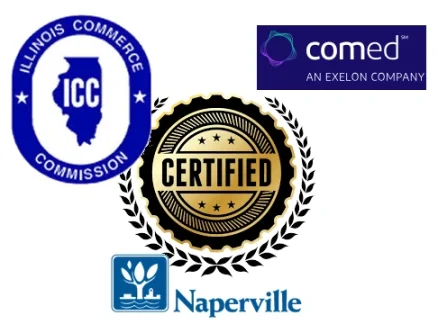
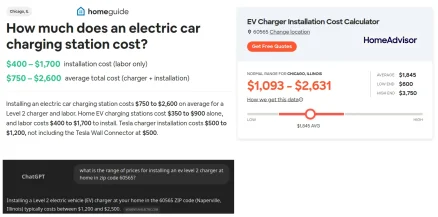
Cost Breakdown
The short answer is that over the past year, my home EV charger install costs (minus the charging unit) have averaged around $1200, with a typical range from $800 to $1600. The cost of the ChargePoint Flex that I usually install adds $600, while the Tesla charger adds $460.
The cheapest installs will be situations where the charger is installed directly adjacent to the panel, while the most expensive will be where wiring must be run dozens of feet through drywall ceilings in a basement and fished through wall partitions to reach the desired charger location. Major factors are:
- The Distance between the Panel and Charger
- The Ceiling Type (unfinished, drop tiles, drywall) and Wall Type between the Panel and Charger
- The Charge Rate (a lower charge rate can reduce wire sizing and costs)
- Overall Complexity of Framing (in walls/ceilings/spaces I need to traverse with wiring)
- Hardwire vs Plug
I usually will do an in-person inspection of the property prior to giving out a quote, which will include an overview of your current electrical system and its available load.
Reliable service and care!
The point of using dummy text for your paragraph is that it has a more-or-less normal distribution of letters. making it look like readable English.
Schedule your free quote today, let me know how I can help you!
Charger Rebate Offers
I can assist you in finding rebates for your EV charger install, which can offset a large portion of the total cost. Residents of Naperville are eligible to receive up to a $500 credit for an EV charger install through the city's power company, but this requires using a registered contractor such as myself and having me pull a permit for the job (always recommended regardless). Some residents of Naperville are also eligible for a further $1000 tax credit from the IRS.
ComEd customers, such as those in Bolingbrook and Woodridge, may be eligble for up to $3750 in credit if income-eligible, or $1000 otherwise.
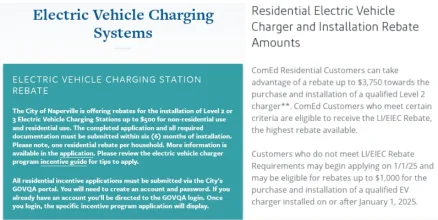
EV Outlet Install
If you want to use a mobile charger or plug-in wall charger, you will need an outlet installed. The standard outlet is the 14-50R, the standard 50 amp outlet for homes. Another, 6-50R, is available, which excludes the neutral wire. This wire is never used by any EV charger, and as such is superfluous at $1/ft. Many chargers offer a 6-50P plug option, and this may be a good cost-savings option for you over the 14-50R standard, which is now more of an anachronism carried over from days when EVs were rare and RVs and other appliances were the dominant reason for the 14-50R to be in someone's home.
In addition, there is a new "EV rated" standard being pushed by certain manufacturers, claiming their outlets are built to a higher spec, required for long duration charging.
In this video, I discuss this EV rating with several options, and I explain why I don't typically install EV rated outlets over standard ones, particularly from the manufacturer Legrand, though I believe the opinions apply generally. The price difference can be 5-10% of the total job cost, so it's not insignificant.
Load Considerations
The most important element of a new install is making sure the wiring and electrical panel can handle the heavy load, as well as making sure the piping and wiring are secure and safely installed with shock protection where required. The last thing you want is your car to charge you!
There are a few other significant concerns that we can help with, including the load capabilities of your existing electrical panel and service size, as well as the charge rate you can use with your home's setup. We can help pull a permit for your job and ensure that you have sufficient overhead for your charger and an appropriate charging rate.
Another option, if it requires electrical upgrades for a Level 2 Charger, is to install a Load Controller rather than a full service upgrade. This can be 90% cheaper than a service upgrade without radically overhauling your existing home's electrical system.
I highly recommend to my clients to go onto their power company's online dashboard to find a chart of their past year's Peak Demand. This will tell you exactly how much power you have required in the previous year, in 15-minute increments, so you can get an idea of how much headroom remains for your EV charger.
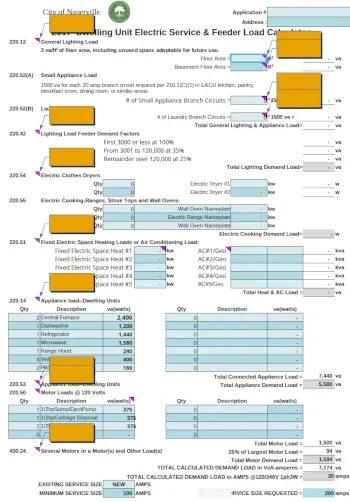

Level 1 vs Level 2 Charging Stations
Level 1 charging stations plug in to a standard wall receptacle. These are heavily limited in the amount of energy they can use, generally no more than 12-16A continuously at 120V. This is generally insufficient for anything more than very light, local driving.
Level 2 charging stations are either hardwired to your panel or plug in to heavier duty receptacles, such as the standard 50A NEMA, and utilize a power-doubling 240V circuit. So not only is the amperage greatly increased versus a Level 1 plug, but also that amperage's power is doubled by heading up to 240V. Even if your panel cannot permit a full 48A charge rate, even a 32A 240V charge rate will be over 5 times faster, and often fully sufficient for daily use.
I generally recommend and install hardwired level 2 chargers rather than plug-in. This saves some cost typically, and reduces the complexity of the installation, as well as being safer in my opinion. It also opens up the possibility of rebate offers, detailed below.
Services I Provide
- Ceiling Fan Installation and Replacement
- Exhaust & Bath Fan Installation and Replacement
- Surge Protectors
- Circuit Breakers
- Panels & Subpanels
- Appliance Outlets
- Meters & Services
- Receptacle Repair
- Switches
- Smoke Detectors
- Carbon Monoxide Detectors
- Wiring Upgrades
- Smart Doorbells
- Smart Home Devices
- Attic Fan Installation
10-Year Warranty on All Work
Every job I do is covered by a 10-year warranty on all labor and workmanship, plus additional manufacturer warranties for parts installed.
Additionally, I always work with 100% satisfaction guaranteed. If there is anything you are unhappy with, I will fix it and make it right for you!
